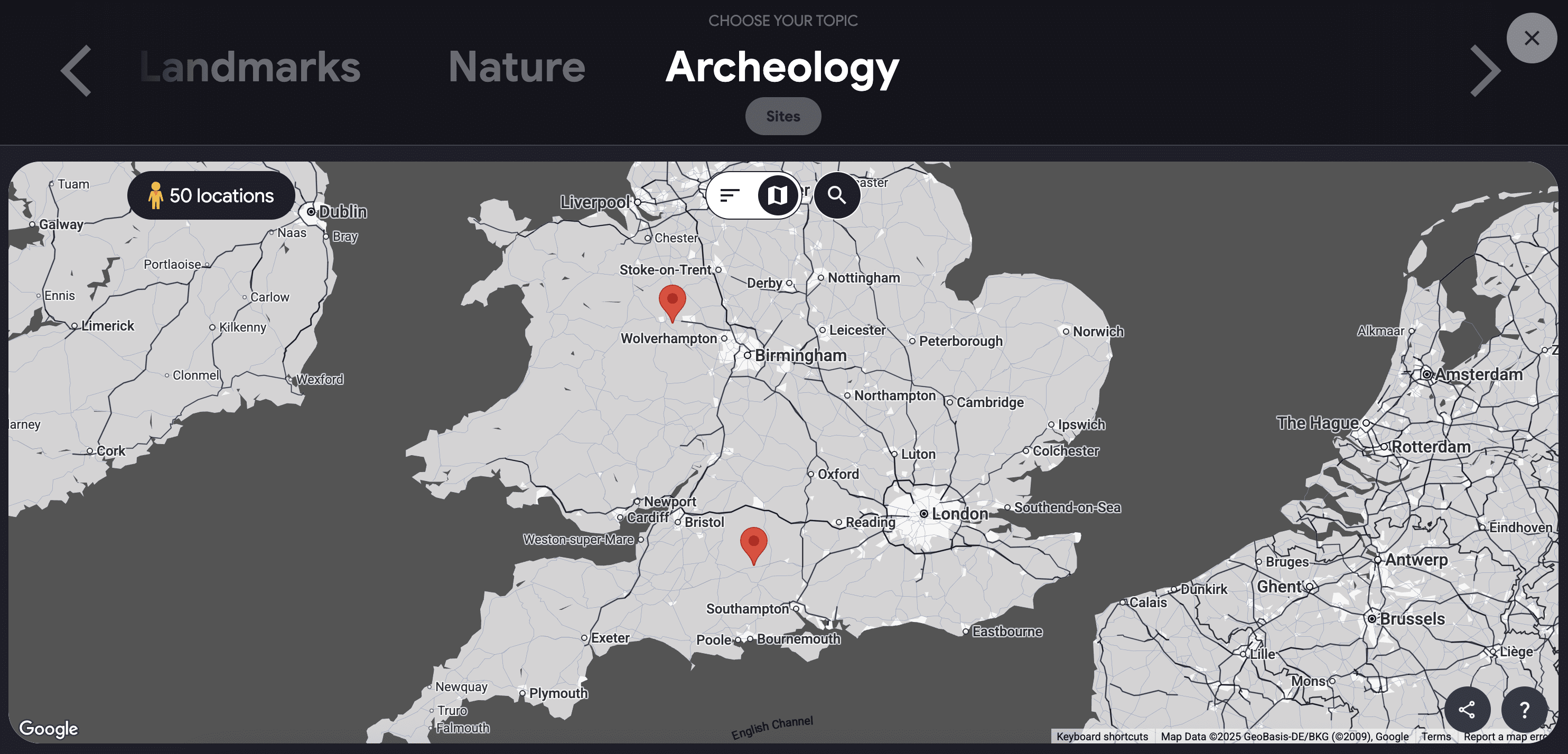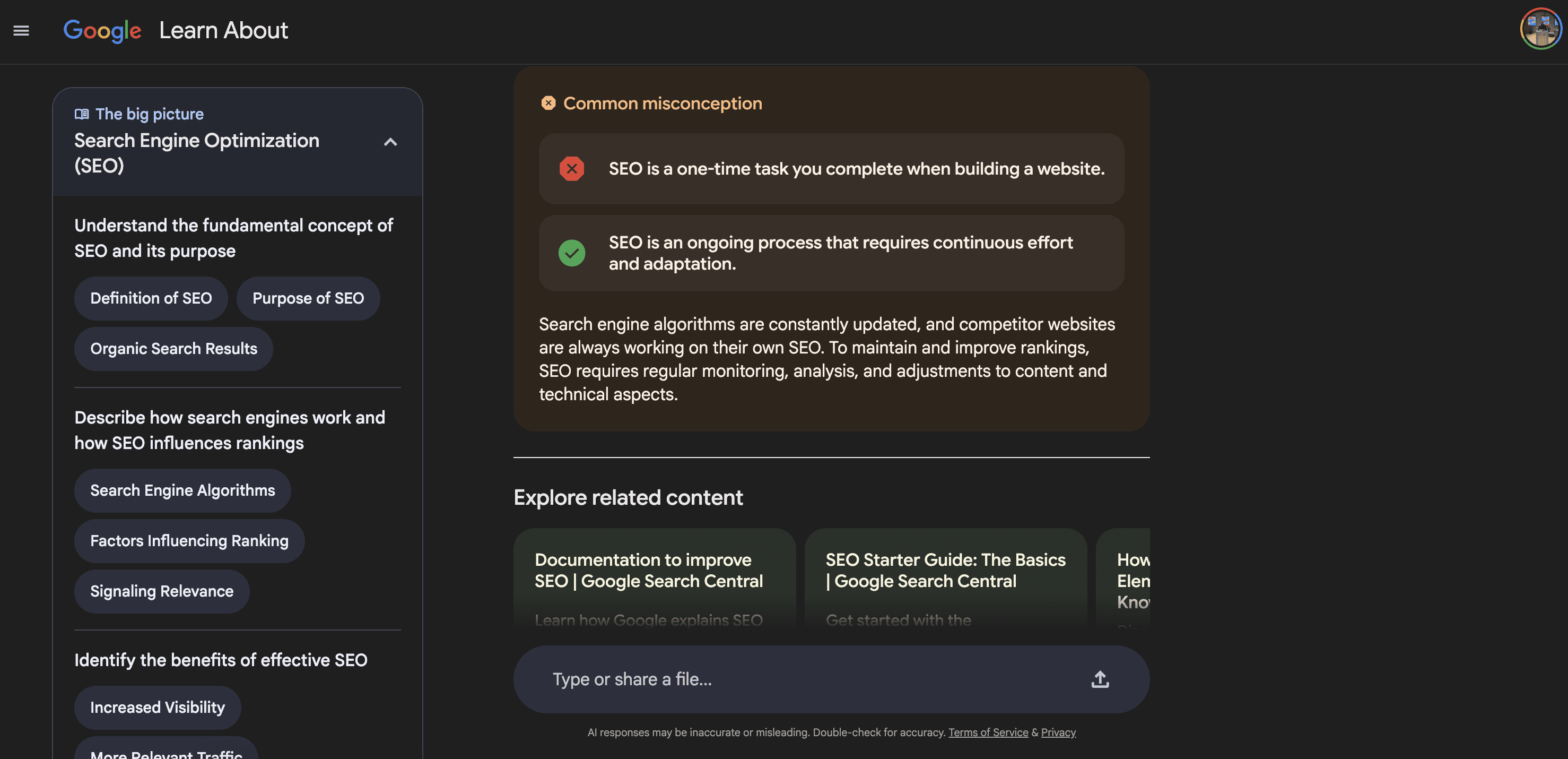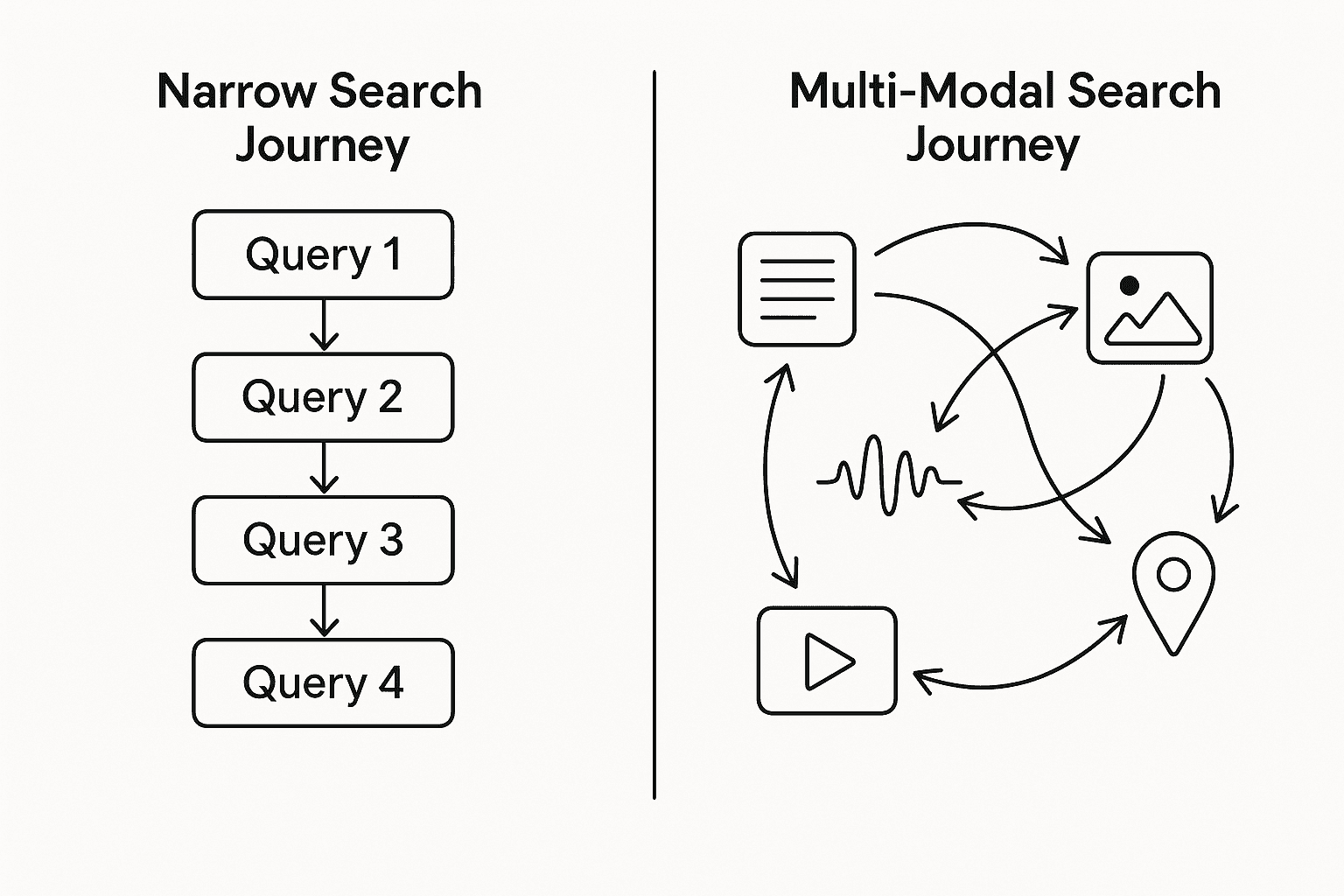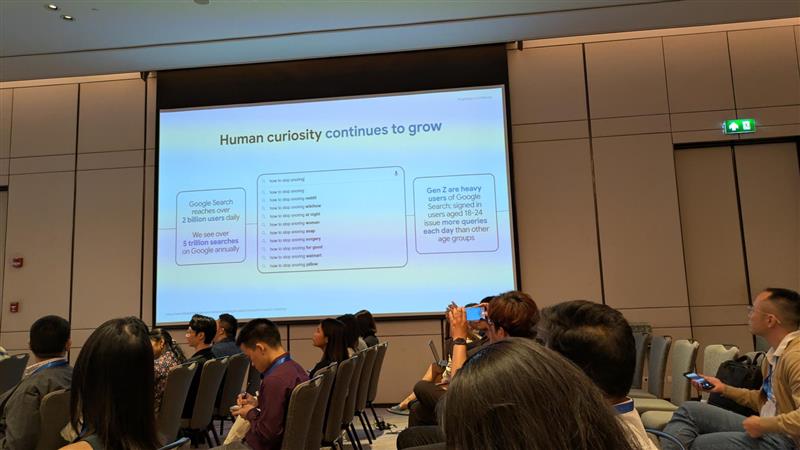The User Journey Isn’t Linear Anymore: It’s Always On via @sejournal, @TaylorDanRW
For many years, organizations have relied on a familiar view of the customer journey. The idea that a user moves from awareness to consideration to decision in a neat and predictable line has shaped how brands communicate, measure, and invest.
The rise of AI has shown that this model no longer reflects how people actually behave, and the real journey is fluid, continuous, and influenced by many sources at once.
The shift is not a small adjustment; it is a fundamental change in how demand is created and how decisions are made.
Why The Linear Model No Longer Fits
The linear path breaks because AI now compresses what used to be separate stages into a single moment.
A person can ask for suggestions, comparisons, recommendations, suitability checks, and next steps within one interaction, and the technology responds by folding several layers of intent into one answer.
Users no longer need to progress step by step, as discovery, evaluation, and shortlisting can now happen together. The impact on how brands attract and retain attention is significant, as every touchpoint becomes a potential point of influence.
People enter the journey from many different places and at many other times.
Large language models (LLMs), marketplaces, social platforms, email, traditional search, and emerging assistants all serve as both starting points and accelerators, making the first touchpoint no longer predictable.
The real pattern resembles a series of loops rather than a line, as users move back and forth while refining their wants, and AI tools guide them through this exploration by shaping and clarifying their thinking.
A simple example shows how quickly the linear model breaks.
A person thinking about buying new running shoes might previously have searched for brands, compared prices, read reviews, visited a store, and only then made a decision.
Today, the same person can ask an AI assistant for recommendations based on their running style, previous injuries, preferred terrain, and budget, and receive tailored options in seconds.
The assistant can provide comparisons, highlight differences, explain fit considerations, and even suggest alternatives that the user had not considered.
The process jumps across multiple stages at once, without the user moving through a sequence of pages or channels. The journey becomes a loop of questions and refinements rather than a straight line.
The process is not a funnel; it is a dynamic system driven by intent that evolves with every interaction.
The Rise Of The Always-On Journey
The idea of an always-on journey captures this reality. Decisions are shaped gradually, through signals, prompts, and small moments of influence spread across multiple environments. There is no fixed beginning or end, only windows where your brand becomes relevant based on the user’s needs, context, and constraints.
AI widens these windows by introducing products and services during tasks that might seem unrelated, so discovery is not something brands can schedule or stage. It happens whenever the technology sees an opportunity to help the user progress.
This shift has also been accelerated by the way major technology companies are positioning AI as a core feature of their products. Smartphones, laptops, and operating systems now include assistants that are marketed as everyday companions capable of producing content, planning tasks, answering questions, and guiding decisions.
The advertising behind these features plays a significant role in shaping user behavior, as it encourages people to rely on AI in more situations and across a broader range of personal and professional tasks.
The journey towards adoption follows a simple path: from seeing to understanding, trusting, trying, using, and eventually scaling.
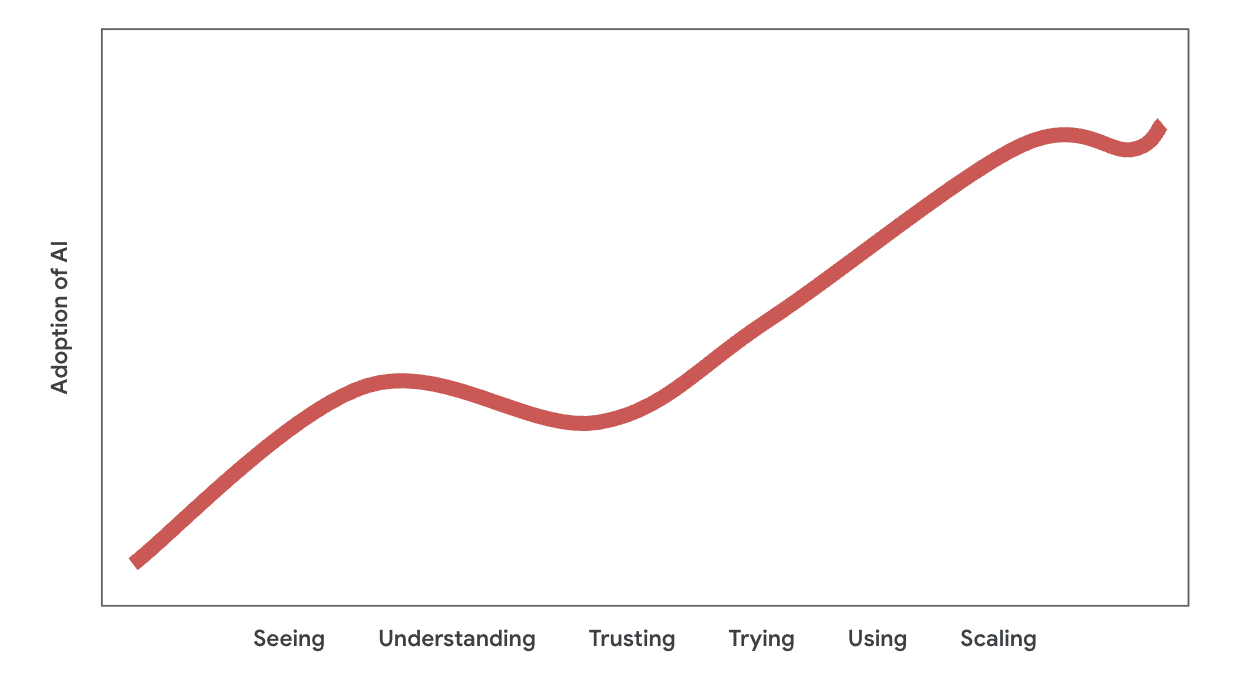
People see the feature highlighted in a product launch or advert, understand the benefit through demonstrations, begin to trust the technology when they see it used in credible scenarios, try it themselves, start using it regularly, and eventually scale it across more tasks. Each step is reinforced by the device ecosystem, which keeps the technology present and available throughout the day.
This pattern means the user is never far from an AI-driven touchpoint, which in turn keeps the journey active at all times. The more familiar users become with these tools, the more naturally they integrate them into decision-making. The result is a journey that does not pause between stages but remains in motion, shaped by continuous access to assistance, advice, and recommendations.
What Organizations Need To Do
Organizations need to adapt by treating every asset as a potential entry point. Product pages, support articles, category pages, guides, tools, videos, and reviews can all be surfaced first, so each one must stand on its own and communicate value without relying on the rest of the site or campaign.
This requires clarity, structure, and consistency, because users (and AI systems) will not follow the path you expect.
Brands also need to think in terms of anticipation rather than reaction. When a user is exploring options, they benefit from seeing comparisons, trade-offs, alternatives, and clear explanations of who a product is for and who it is not for.
These elements help people imagine how the product or service might fit into their situation, which strengthens trust and improves the likelihood of being included in the user’s shortlist, even if the journey restarts several times.
AI tools rely on machine-readable signals to understand a brand, and structured information now carries more weight than ever. Organizations that invest in clear product data, logical information architecture, and consistent descriptions make it easier for AI systems to explain their offer. This is not a technical exercise; it is a strategic requirement for visibility in an environment where users expect fast, accurate guidance.
Conclusion: Adapting To An Always-On Reality
Success will come from supporting the journey rather than trying to control it. People will continue to loop, reassess, and re-enter from new angles, yet they will respond well to brands that stay present, offer clarity, and help them navigate choices with confidence.
The customer journey never truly followed a line, and AI has simply revealed how dynamic it has always been.
Brands that recognize this shift and adapt their approach will build stronger connections and remain relevant in a market that no longer moves from stage to stage but operates continuously, in an always-on.
More Resources:
Featured Image: hmorena/Shutterstock










